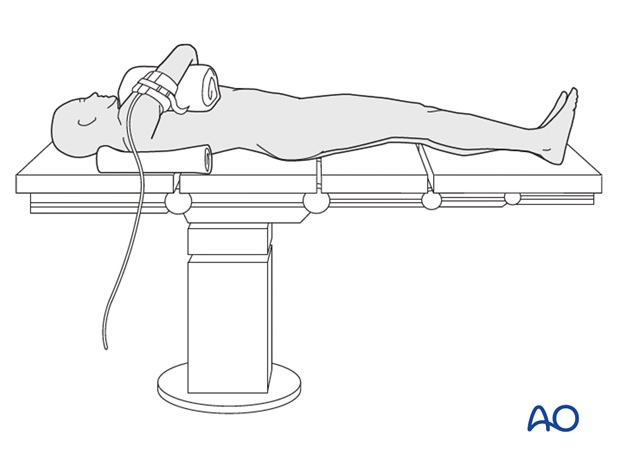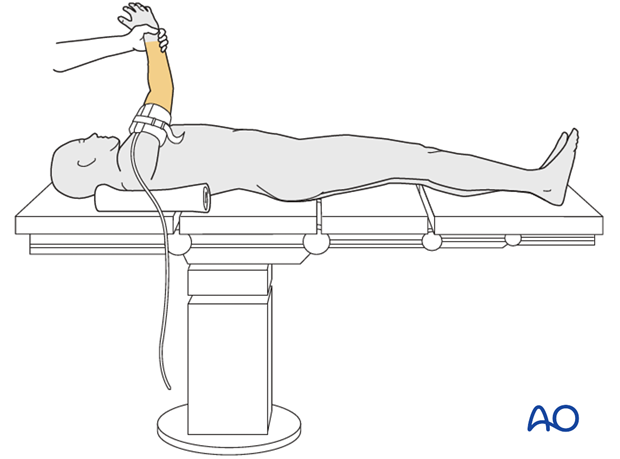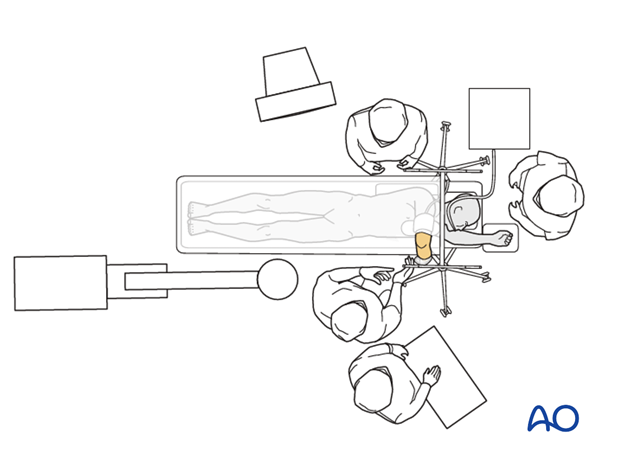Supine for posterior access
1. Introduction
The majority of patients with isolated proximal forearm fracture can be positioned supine, with the arm across the chest, posterior exposure is enhanced.
2. Preoperative preparation
Operating room personnel need to know and confirm:
- Site and side of fracture
- Type of operation planned
- Ensure that operative site has been marked by the surgeon
- Conditions of the soft tissues (fracture open or closed)
- Implants, instrumentation, and equipment required
- Patient positioning
- Details of the patient (including a signed consent form and appropriate antibiotic and thromboprophylaxis)
- Comorbidities, including allergies
3. Anesthesia
The procedure is performed with the patient under general anesthesia.
While technically possible, regional anesthesia is not advised as the procedure can be prolonged.
4. Positioning
Place the patient supine on a radiolucent table with the shoulder adducted and the elbow flexed across the torso, stabilized by an assistant, a well-padded arm rest, or a cushion (as illustrated).
Pillows or cushions to tilt the torso towards the opposite side will help keep the injured arm over the chest.
Take extreme care to protect the patient’s face and eyes before skin disinfection.
Adjust the operating table to the appropriate height.
Place the image intensifier screen opposite the surgeon on the other side of the table. Make sure intra-operative fluoroscopy can be obtained both in AP and lateral direction.
Use of a sterile tourniquet is determined by surgeon’s preference.

5. Skin disinfecting and draping
After positioning the patient, disinfect the entire upper limb with the appropriate antiseptic.

Drape the upper arm, including the tourniquet. If a sterile tourniquet is used it is applied after draping.
Drape the hand separately to allow elbow flexion during surgery and imaging.
Complete patient draping using single-use drapes or sterile sheets.
Drape the image intensifier.

6. Operating room set-up
- The ORP and surgeon stand on the side of the injury.
- The assistant stands on the opposite side.
- Place the image intensifier on the same side as the surgeon.
- Place the image intensifier display screen in full view of the surgical team and the radiographer.














